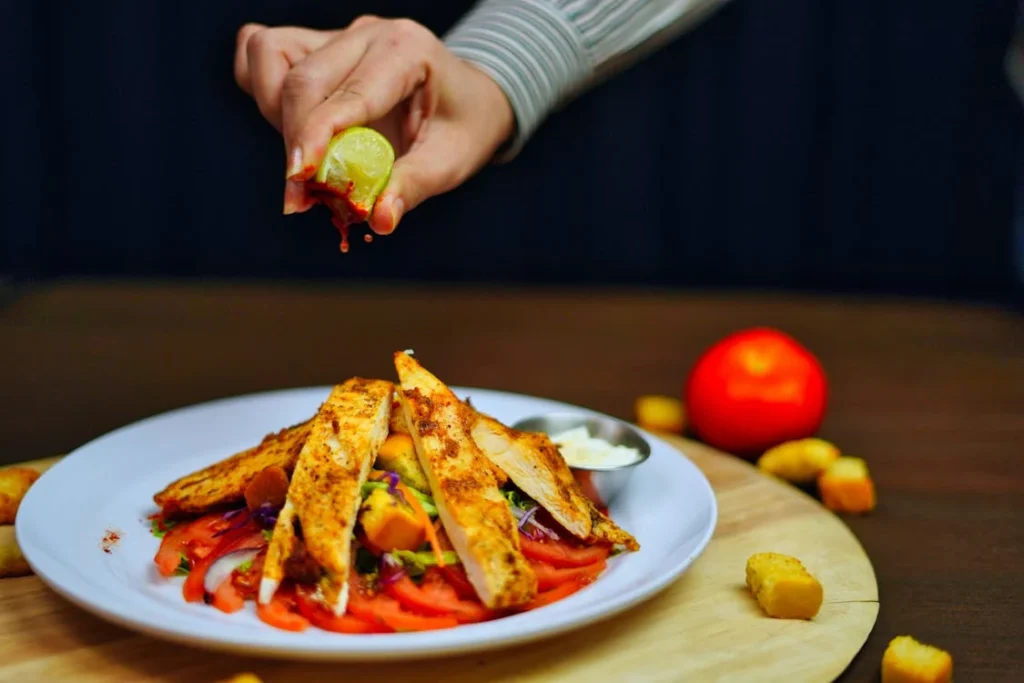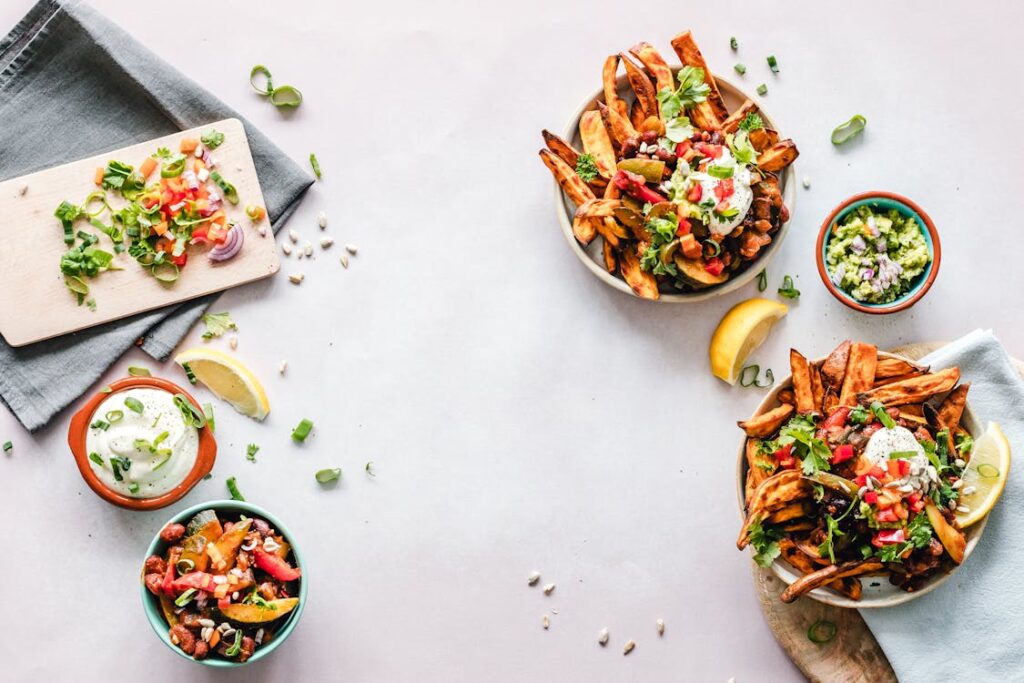Phantom limb pain is a strange and frustrating experience. It happens when someone who has lost a limb still feels pain where the limb used to be. This pain can feel like burning, stabbing, or even electric shocks. It might come and go or stay for a long time. Doctors are still trying to fully understand why it happens, but one thing is clear—what you eat can make a big difference.
Yes, your diet plays a major role in how your nerves function, how your body heals, and even how much inflammation is in your system. The right foods can help calm your nerves and reduce pain, while the wrong ones can make it worse. But how exactly does food affect phantom limb pain? And what changes should you make in your diet to feel better?

The Link Between Diet and Nerve Pain
Phantom limb pain is closely tied to how your nerves send signals to your brain. After an amputation, the nerves that used to connect to your missing limb still exist.
They can misfire, sending pain signals to the brain even when there is no physical reason for it. This happens because the brain is still trying to process signals from the missing limb.
Scientists believe that inflammation, nerve sensitivity, and even blood sugar levels can influence how severe this pain feels.
What you eat plays a direct role in all these factors. Some foods can cause inflammation, making nerves more sensitive and increasing pain. Others can support nerve health, helping them function properly and reducing discomfort.
A diet rich in vitamins, minerals, and the right types of fats can help calm overactive nerve signals and improve how your body responds to pain.
How Inflammation Makes Phantom Limb Pain Worse
Inflammation is the body’s way of protecting itself from harm. When you get hurt or have an infection, your immune system sends out chemicals to fight off the problem.
This is a natural and necessary process. But sometimes, inflammation goes too far and becomes chronic. This means your body stays in a state of stress, even when there’s no real danger.
Chronic inflammation is linked to many health problems, including nerve pain.
Certain foods can trigger this kind of inflammation, making phantom limb pain worse. Processed foods, sugary drinks, fried foods, and refined carbohydrates can all cause an increase in inflammation.
When this happens, the nerves become more sensitive, and the pain signals sent to the brain become stronger. This is why some people notice that their pain gets worse after eating a diet high in processed foods.
On the other hand, a diet rich in anti-inflammatory foods can help. Fresh fruits and vegetables, whole grains, healthy fats, and lean proteins provide the body with the nutrients it needs to reduce inflammation.
Omega-3 fatty acids, found in fish, nuts, and seeds, are especially powerful in calming inflammation and supporting nerve health.
The Role of Blood Sugar in Nerve Sensitivity
Many people don’t realize that blood sugar levels also play a role in nerve pain. When blood sugar spikes and crashes frequently, it can damage nerves over time.
This is a major problem for people with diabetes, who often experience nerve pain in their hands and feet due to high blood sugar levels. But even if you don’t have diabetes, unstable blood sugar can still make phantom limb pain worse.
Eating too much sugar or refined carbohydrates causes blood sugar to rise quickly. The body responds by releasing insulin to bring it back down.
This constant cycle of highs and lows puts stress on the nervous system, making pain signals more intense. Keeping blood sugar stable by eating balanced meals with protein, fiber, and healthy fats can help prevent these spikes and keep nerves functioning properly.
Why Hydration Matters for Pain Management
Water is often overlooked when it comes to managing pain, but staying hydrated is essential for nerve function. When the body is dehydrated, nerves don’t communicate as efficiently, and pain can feel more intense. Dehydration also increases inflammation, making the body more sensitive to pain.
Drinking enough water throughout the day can help flush out toxins, keep nerves functioning properly, and reduce inflammation. Herbal teas and water-rich foods like cucumbers, watermelon, and oranges can also contribute to hydration.
Avoiding too much caffeine and alcohol, which can dehydrate the body, is another way to support nerve health.

Nutrients That Support Nerve Health and Reduce Phantom Limb Pain
What you eat has a direct impact on how your nerves function and how much pain you feel. Some nutrients help repair damaged nerves, reduce inflammation, and improve blood flow, all of which can ease phantom limb pain.
By including the right vitamins and minerals in your diet, you can support your nervous system and make it less likely that pain signals will be triggered.
The Power of Omega-3 Fatty Acids
One of the most important nutrients for nerve health is omega-3 fatty acids. These healthy fats are found in fatty fish like salmon, mackerel, and sardines, as well as in flaxseeds, walnuts, and chia seeds.
Omega-3s reduce inflammation in the body and support the regeneration of nerve cells. Research shows that these fats help protect nerves from damage and improve their ability to send signals properly.
People who consume enough omega-3 fatty acids often experience lower levels of chronic pain, including nerve-related pain. Since phantom limb pain is closely connected to how nerves behave, adding more of these healthy fats to your diet may help reduce its intensity.
If you don’t eat fish often, omega-3 supplements like fish oil or algae oil can be a good alternative.
Vitamin B12 and Nerve Repair
Vitamin B12 is crucial for keeping nerves healthy. It helps produce the protective covering around nerves, known as the myelin sheath. Without enough B12, nerves become damaged and start sending faulty signals, which can make pain worse.
Many people don’t get enough B12, especially those who follow a vegetarian or vegan diet, as this vitamin is mainly found in animal products like eggs, dairy, fish, and meat.
B12 deficiency is linked to increased nerve pain, tingling, and numbness, which can make phantom limb pain feel even more intense. If you suspect you are low on B12, eating more B12-rich foods or taking a supplement can help restore nerve function and reduce pain.
Magnesium for Nerve Relaxation
Magnesium is another important mineral for managing pain. It helps relax muscles, supports nerve function, and reduces inflammation. A lack of magnesium can make nerves more sensitive, causing pain to feel more severe.
Foods high in magnesium include leafy green vegetables, nuts, seeds, and whole grains. Many people don’t get enough of this mineral in their diets, which can contribute to muscle cramps and nerve pain.
Increasing magnesium intake may help calm overactive nerve signals and provide relief from phantom limb pain.
Antioxidants and Their Role in Pain Reduction
Antioxidants help protect nerve cells from damage caused by oxidative stress. Oxidative stress occurs when harmful molecules called free radicals build up in the body, leading to inflammation and nerve damage. This can make pain worse over time.
Eating foods rich in antioxidants, such as berries, dark leafy greens, and nuts, can help counteract this damage. Vitamins C and E, found in citrus fruits, nuts, and seeds, are particularly beneficial for reducing nerve-related pain.
Green tea is also a great source of antioxidants and has been shown to have anti-inflammatory properties that can support nerve health.
The Connection Between Gut Health and Pain
The gut and nervous system are more connected than most people realize. A healthy gut can reduce inflammation and improve nerve function, while an unhealthy gut can contribute to chronic pain.
The balance of bacteria in your gut affects how your body processes nutrients, fights inflammation, and even how it perceives pain.
Eating probiotic-rich foods like yogurt, kefir, and fermented vegetables can help maintain a healthy gut. Prebiotic foods, such as garlic, onions, and bananas, feed good bacteria and support overall gut health.
Keeping your digestive system healthy can have a positive effect on nerve pain, including phantom limb pain.

Foods That Can Make Phantom Limb Pain Worse
Just as some foods help reduce nerve pain, others can make it worse. The way the body responds to food plays a big role in how sensitive nerves are and how strong pain signals become.
Certain foods increase inflammation, disrupt blood sugar levels, or interfere with nerve function, making phantom limb pain more intense. Avoiding these foods can help keep pain under control and improve overall nerve health.
Processed and Fried Foods: Triggers for Inflammation
Highly processed and fried foods are some of the biggest culprits when it comes to increasing inflammation. These foods contain unhealthy fats, preservatives, and chemicals that put stress on the body.
Fast food, packaged snacks, processed meats, and deep-fried foods all contribute to long-term inflammation, which can make nerve pain worse.
Trans fats, found in many processed foods, are particularly harmful. They not only cause inflammation but also restrict blood flow, which is essential for nerve health.
When nerves don’t get enough oxygen and nutrients from the blood, they become more sensitive, leading to increased pain. Switching to whole, unprocessed foods can help reduce inflammation and support nerve function.
Excess Sugar and Refined Carbohydrates
Sugar and refined carbohydrates cause rapid spikes and crashes in blood sugar levels, which can stress the nervous system.
When blood sugar fluctuates too much, it leads to inflammation and nerve damage. Over time, this makes pain signals more intense.
Foods like white bread, pasta, pastries, and sugary drinks cause these sudden spikes in blood sugar. The body responds by releasing insulin to lower blood sugar levels, but frequent spikes and crashes put extra strain on nerves.
Instead of refined carbs, choosing whole grains like brown rice, quinoa, and whole wheat can help stabilize blood sugar and prevent nerve pain from worsening.
Artificial Sweeteners and Additives
Many people turn to artificial sweeteners to cut down on sugar, but these additives can sometimes make nerve pain worse. Certain artificial sweeteners, such as aspartame, have been linked to increased nerve sensitivity.
Some people with chronic pain conditions report that artificial sweeteners trigger their symptoms, making their pain feel more intense.
Preservatives and food additives, commonly found in packaged and fast foods, can also have negative effects. The body may react to these chemicals with inflammation, which can make nerve pain harder to manage.
Choosing natural, whole foods without artificial ingredients is a better option for reducing phantom limb pain.
Alcohol and Its Impact on Nerve Function
Alcohol affects the nervous system in several ways. In small amounts, it may seem to relax the body, but regular consumption can actually worsen nerve pain. Alcohol dehydrates the body, and dehydration increases inflammation and nerve sensitivity.
Over time, alcohol can also damage nerve cells, leading to a condition called alcoholic neuropathy. This condition causes tingling, numbness, and burning pain, similar to phantom limb pain.
For people who already struggle with nerve pain, reducing alcohol intake can help improve overall nerve function and prevent further damage.
Excess Caffeine and Its Effect on the Nervous System
Caffeine is a stimulant that affects the nervous system, and while a moderate amount may not cause issues, too much can increase nerve sensitivity.
Caffeine can lead to dehydration, and as mentioned earlier, dehydration makes pain worse.
Additionally, caffeine affects sleep quality. Poor sleep can heighten pain perception, making phantom limb pain feel stronger. If caffeine disrupts your sleep, cutting back on coffee, tea, and energy drinks may help reduce nerve pain and improve overall well-being.

Practical Diet Changes to Manage Phantom Limb Pain
Understanding which foods help or worsen phantom limb pain is only the first step. The real challenge is making changes to your daily diet in a way that is easy and sustainable.
The good news is that even small adjustments can have a big impact on how your nerves function and how much pain you experience.
Making mindful choices about what you eat can help reduce inflammation, improve nerve health, and make pain more manageable over time.
Start by Adding More Anti-Inflammatory Foods
One of the simplest ways to improve your diet is by increasing your intake of anti-inflammatory foods. Fresh fruits and vegetables, especially leafy greens, berries, and citrus fruits, are packed with antioxidants that help reduce nerve irritation.
Whole grains like brown rice, oats, and quinoa provide steady energy without causing blood sugar spikes, keeping nerves more stable.
Healthy fats from sources like olive oil, avocados, and nuts help support nerve function. Omega-3-rich foods such as salmon, flaxseeds, and walnuts should also become a regular part of your meals.
These fats reduce inflammation and support nerve repair, making them essential for managing phantom limb pain.
Reduce Processed Foods and Sugary Snacks
Cutting down on processed foods can have an immediate impact on inflammation levels. Fast food, packaged snacks, and ready-made meals often contain unhealthy fats, preservatives, and excess sodium that increase inflammation.
Instead of relying on these, try cooking more meals at home using fresh, whole ingredients.
Replacing sugary snacks with natural options like fruit, yogurt, or dark chocolate can help keep blood sugar levels stable. If you enjoy sweets, switching to healthier alternatives can prevent blood sugar spikes that worsen nerve sensitivity.
Even small changes, like replacing white bread with whole grain options, can make a noticeable difference in pain levels.
Drink More Water and Herbal Teas
Hydration plays a crucial role in how nerves function. Dehydration increases inflammation and makes pain more intense. Drinking enough water throughout the day ensures that your nerves can send signals properly and reduces the chances of pain flaring up.
Herbal teas, such as ginger or turmeric tea, provide additional anti-inflammatory benefits. Green tea is another great option since it contains antioxidants that help protect nerve cells from damage.
Reducing sugary drinks and alcohol can also help improve hydration and overall nerve health.
Plan Balanced Meals with Nerve-Boosting Nutrients
Ensuring that every meal contains a balance of protein, healthy fats, and fiber can help keep your nervous system in check. Protein sources like fish, eggs, lentils, and lean meats provide essential amino acids that support nerve repair.
Including nuts and seeds in your meals adds healthy fats that help reduce nerve sensitivity.
If you struggle with planning meals, focusing on simple combinations like grilled fish with roasted vegetables or a smoothie with yogurt, nuts, and berries can make it easier.
Eating consistently and avoiding long gaps between meals can also help stabilize blood sugar levels and prevent sudden pain flare-ups.
Be Patient and Track Your Progress
Dietary changes take time to show results, so being patient is key. Keeping a food journal to track what you eat and how it affects your pain can help you identify patterns. If certain foods make your phantom limb pain worse, reducing or eliminating them can provide relief.
If you’re unsure about making these changes on your own, consulting a nutritionist can provide personalized guidance. They can help create a meal plan that works for your specific needs and ensures that you get all the nutrients required for nerve health.

Lifestyle Habits That Support a Pain-Reducing Diet
While diet plays a major role in managing phantom limb pain, it works best when combined with healthy lifestyle habits. The body functions as a system, and what you eat is just one part of the equation.
Proper sleep, regular physical activity, stress management, and rehabilitation exercises can all complement your diet to improve nerve health and reduce pain. Making these changes can help your body respond better to food and maximize its ability to heal.
Improve Sleep Quality to Support Nerve Healing
Poor sleep is a major contributor to increased nerve pain. When the body doesn’t get enough rest, inflammation rises, and pain perception becomes more intense.
Sleep is also the time when the body repairs damaged nerves, so getting enough quality sleep is essential for reducing phantom limb pain.
A good nighttime routine can improve sleep quality. Avoiding caffeine in the afternoon, reducing screen time before bed, and creating a relaxing bedtime environment can help.
Eating a balanced meal with protein and healthy fats in the evening also prevents blood sugar crashes, which can disrupt sleep. If pain is keeping you awake, warm herbal teas like chamomile or turmeric milk can have a calming effect.
Stay Active with Gentle Exercise
Regular physical activity improves blood flow, reduces inflammation, and helps the body process pain signals more effectively. Exercise also releases endorphins, which are natural painkillers that help reduce nerve sensitivity.
Even simple activities like walking, stretching, or yoga can make a big difference in how your body responds to pain.
Strengthening exercises that target muscles around the affected limb can also help. If you use a prosthetic limb, working with a physiotherapist to build strength and flexibility can improve overall comfort and reduce nerve irritation.
Staying active also helps regulate blood sugar, which is another important factor in managing nerve pain.
Manage Stress to Reduce Inflammation
Stress and pain are closely linked. When you feel stressed, your body releases hormones that increase inflammation and make nerves more sensitive. Chronic stress can make phantom limb pain worse by keeping the nervous system in a constant state of tension.
Mindfulness techniques, meditation, and breathing exercises can help manage stress and lower inflammation. Engaging in activities that bring joy, such as hobbies, music, or spending time with loved ones, can also improve overall well-being.
Reducing stress levels allows the body to heal more effectively and respond better to dietary changes.
Rehabilitation and Therapy for Long-Term Pain Management
Phantom limb pain often improves with a combination of diet, exercise, and therapy. Rehabilitation programs that include mirror therapy, desensitization techniques, and prosthetic training can help the brain adjust to the loss of the limb and reduce pain signals.
At Robobionics, we provide gamified home-based rehabilitation programs that make it easier for users to adapt to their prosthetics. These interactive therapies help retrain the brain, reduce nerve pain, and improve overall mobility.
If you’re struggling with phantom limb pain, exploring rehabilitation options can be a game-changer in your recovery. Contact us today to learn more about our advanced prosthetic solutions and personalized rehabilitation programs.

The Gut-Brain Connection: How Your Digestive Health Affects Phantom Limb Pain
One of the lesser-known but highly important factors in managing phantom limb pain is gut health. Scientists have discovered that the gut and brain communicate constantly through what is called the gut-brain axis.
This means that the bacteria in your digestive system play a role in how your nervous system functions, how much inflammation is in your body, and even how you perceive pain.
When the gut is in balance, it produces neurotransmitters that help regulate mood and pain responses. But when gut health is poor, it can lead to increased inflammation, heightened nerve sensitivity, and even emotional stress, all of which can make phantom limb pain worse.
How an Unhealthy Gut Increases Pain
The gut is home to trillions of bacteria, some of which support health and some that can cause harm when they grow out of control. A healthy gut contains more beneficial bacteria, which help with digestion, immune function, and inflammation control.
But when harmful bacteria take over—often due to a poor diet, antibiotics, or chronic stress—it creates a state called dysbiosis, which can trigger widespread inflammation.
This inflammation doesn’t just stay in the gut. It spreads throughout the body, affecting nerves and making pain more intense. Research shows that people with chronic pain conditions, including nerve pain, often have imbalanced gut bacteria.
This means that improving gut health could be a key way to reduce phantom limb pain.
The Role of Gut Bacteria in Pain Perception
Your gut bacteria influence how your body processes pain. They help produce short-chain fatty acids (SCFAs), which are compounds that reduce inflammation and support nerve health.
When your gut bacteria are out of balance, fewer SCFAs are produced, leading to increased nerve sensitivity and stronger pain signals.
Another way gut bacteria impact pain is through serotonin production. Serotonin is a neurotransmitter that helps regulate pain perception, and about 90% of the body’s serotonin is produced in the gut.
When gut health is poor, serotonin levels drop, making it harder for the brain to manage pain. This could explain why many people with chronic pain also experience mood disorders like anxiety or depression.
How to Improve Gut Health for Pain Relief
Supporting a healthy gut can help reduce nerve inflammation and improve how the body processes pain. One of the best ways to do this is by eating more probiotic-rich foods, which introduce beneficial bacteria into the gut.
Foods like yogurt, kefir, kimchi, sauerkraut, and miso contain live bacteria that can help restore balance in the digestive system.
Equally important are prebiotic foods, which feed the good bacteria and help them grow. These include fiber-rich foods like garlic, onions, bananas, asparagus, and oats.
A diet that includes both probiotics and prebiotics creates a strong gut environment that reduces inflammation and supports nerve function.
Cutting down on processed foods, excessive sugar, and artificial additives can also improve gut health. These foods feed harmful bacteria, leading to an imbalance that increases inflammation and worsens pain.
Staying hydrated and managing stress through relaxation techniques like deep breathing or meditation further supports a balanced gut and nervous system.
By taking care of your gut, you’re not just improving digestion—you’re actively reducing inflammation, supporting nerve health, and helping your body manage pain more effectively.
Conclusion
Phantom limb pain can be challenging, but science shows that what you eat has a direct impact on nerve health, inflammation, and pain levels. A diet rich in anti-inflammatory foods, healthy fats, essential vitamins, and gut-friendly nutrients can help calm nerve signals and reduce pain over time. At the same time, avoiding processed foods, excess sugar, unhealthy fats, and artificial additives can prevent inflammation from making the pain worse.
Beyond diet, hydration, sleep, stress management, and regular movement all play a role in how your body responds to pain. Taking a holistic approach by combining the right foods with healthy habits can lead to long-term improvements in how you feel.
Every person’s body reacts differently, so experimenting with dietary changes and tracking your progress can help you discover what works best for you. If you’re looking for additional support, Robobionics offers advanced prosthetic solutions and personalized rehabilitation programs to help you regain independence and comfort.
Want to take control of your phantom limb pain? Contact us today to explore how our cutting-edge prosthetics and rehabilitation programs can support your journey.



